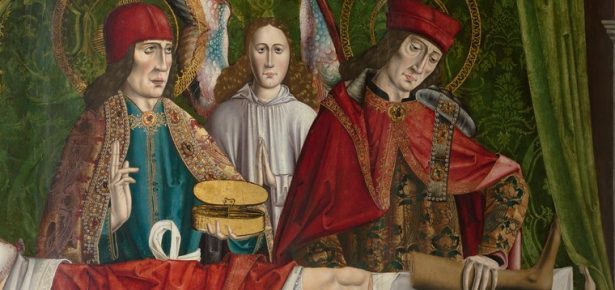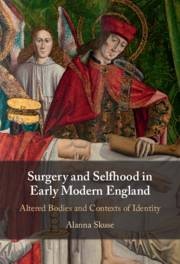
In 1686, John Moyle published a guidebook for young surgeons working in the navy. Before a battle, he advised, they should set up their stations ready to perform amputations. They’d need a barrel to store implements such as their bone saw and knives, and another container in which to keep the disembodied limbs ‘until there is conveniency to heave them over-board’.
Moyle’s grisly instructions give a clue to the prevalence of radical surgery in the sixteenth, seventeenth and eighteenth centuries. Decades of war as well as dangerous manual trades, disease and accidents meant that a surprising number of people underwent operations that changed their bodies forever. Moreover, Moyle’s story raises many questions about the lives of such people. How were they treated when they returned home? Could they use prostheses to live ‘normally’? What were the spiritual ramifications of being buried without all one’s parts?
These are questions I seek to answer in Surgery and Selfhood in Early Modern England: Altered Bodies and Contexts of Identity. For the first time, this book looks closely at numerous kinds of ‘altered bodies’: castrati, mastectomy survivors, amputees and people with facial difference. As one might expect, such people often experienced stigma. Castrati, for instance, were subject to homophobic abuse, while mastectomy survivors simply disappeared from the textual record. However, surgical alteration also provided a means to think through the possibilities of the body, its importance to identity, and how it might be transformed.
These questions circulated through both medical and imaginative literature, and Surgery and Selfhood surveys a diverse range of texts from surgical handbooks to newspapers, advertisements and diaries. In particular, I show how poetry and prose often developed anxieties or fantasies arising from changing the body. Titus Andronicus, for example, provides its central character Lavinia with a ‘prosthesis’ in the form of a stick for writing in the sand which both empowers her and risks making her into a spectacle. Hester Pulter’s poem ‘To Sir John Davenant’ uses an imagined nose reconstruction operation to interrogate the idea of the ‘noble body’ and its failures. The book also uses works of poetry and philosophy to address two neglected topics in early modern embodiment: phantom limbs and the altered body after death. My chapter on phantom limbs shows that this phenomenon was not only recognised in medical texts from the sixteenth century onward, but became a vital touchstone in Descartes’ writing on the senses. Looking to the altered body after death, I examine poetry and philosophy alongside miracle stories and burial practices to show that people were troubled and fascinated by what might happen to their altered bodies (and their disembodied parts) at the Last Judgement.
Surgery and Selfhood aims to contribute to the vibrant fields of disability studies, medical humanities and early modern literary studies by showing that concepts of physically anomalous bodies were far more varied and complex than we have understood. In the hands of early modern thinkers, the altered body was something both rich and strange.

Latest Comments
Have your say!